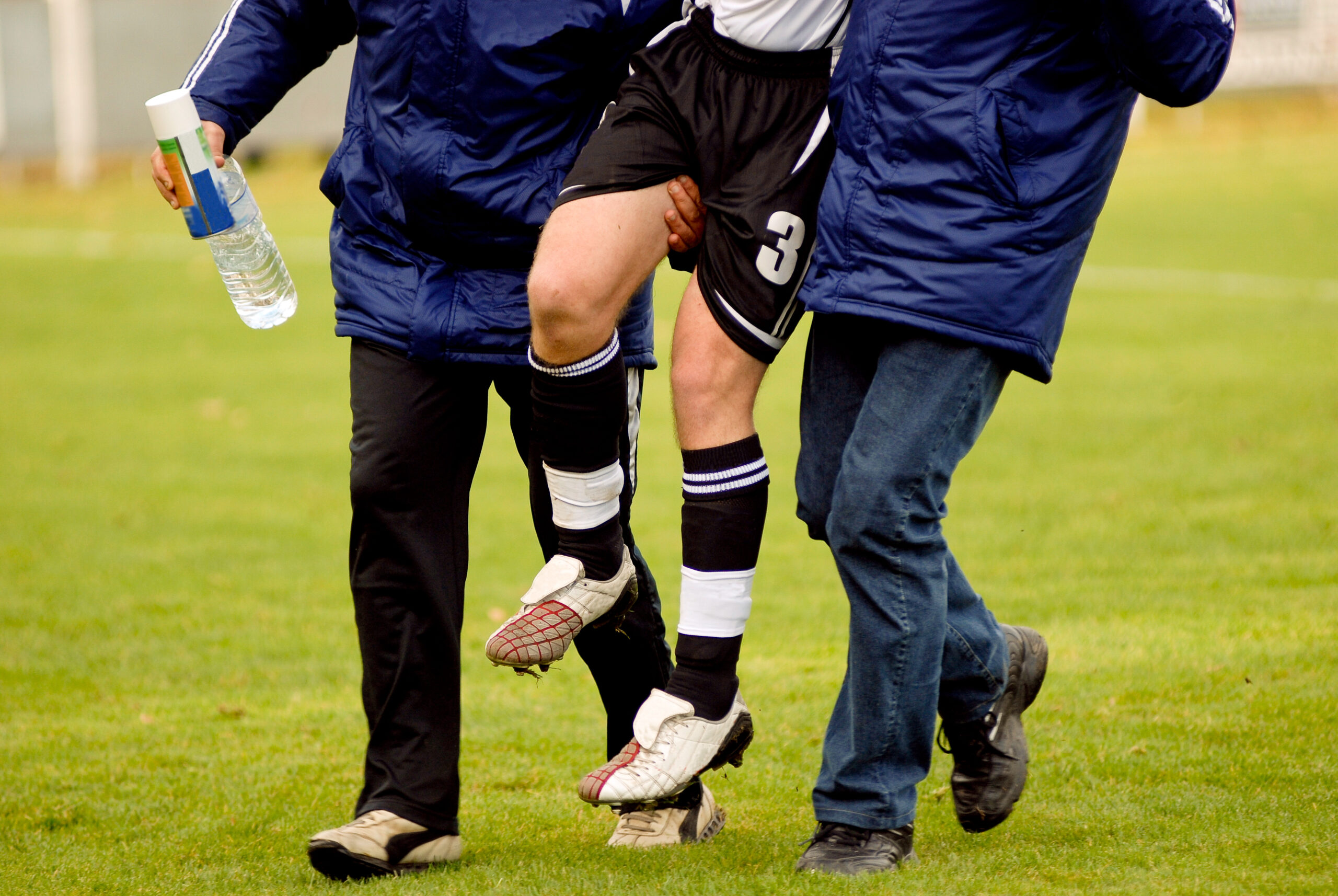Injuries are a part of sport. Some individuals will experience them a lot more often than others and the severity of injuries will vary. Injuries can be categorized in two general ways. Injuries will often be referred to as acute or chronic.
Acute injuries are our first classification. They are usually a bit more serious and orientated around damage. These include bone breaks and muscle tears. They usually come at random and are quite hard to avoid. In many cases they are just purely bad luck or coincidence. On the positive side, the recovery process is normally just a case of letting the injury heal and you may never have any more issues once completed. Unfortunately these types of injuries may take significant time to heal and may even need a medical intervention such as surgery etc.
Acute injuries usually require a process which simply involves adequate time to rest and allow for healing. Return to play protocols are usually more clearly defined and medical professionals and coaches will be able to manage the process quite well. The challenge is having the patience and common sense to prevent any regression or further damage. Rehabilitation programmes may be common with these injuries and they need to be followed diligently and conservatively.

Chronic injuries are a little more interesting and challenging. These may not always be explained by a defined incident or show many symptoms or visible damage. They can be very frustrating, as an athlete may experience pain and discomfort without any real explanation. These injuries can be challenging to diagnose and even harder to treat. Because they are not always obvious and may come and go, an athlete can be taxed mentally when dealing with them. It is quite common to see sudden improvements and regressions with chronic injuries. This can be confusing for an individual.
Chronic injuries are usually the result of a build up of tension or strain on a certain muscle or joint. This either results in mild but re-occurring injuries or transient inflammation. You don’t always know when you’ll experience symptoms until you do. These types of injuries are extremely common in sports with repetitive movements like running or cycling.
A major risk factor for chronic injury is movement inefficiency. When we have slight inefficiency in our movement, certain muscles become overused and overdeveloped. Over time this causes asymmetry. This asymmetry usually allows us to complete a movement, but at the same time exposes us to injury by allowing greater discrepancy in strength between muscles to develop. Eventually something gives. In some cases the big overworked muscles become strained. In other cases the smaller less developed muscles get exposed and become injured as a result of work they cannot cope with. Identifying which cause is the culprit for pain is often very difficult.
Rehabbing chronic injuries is a strategy to address the problem but it is not always effective. Sometimes it solves the problem by addressing weaknesses and on other occasions it may not help at all. In many cases rehab and rest are the only two strategies which may be used once a problem exists. This keeps Physiotherapists and other professionals challenged and very busy.
The best strategy for managing chronic injuries is not always possible but should always be something individuals consider. Prevention is key. Training should promote quality of movement as much as possible to avoid imbalances from developing in the first place. Good technique can go a long way in preventing overuse problems occurring. In addition good strength helps build resilience to strain. Muscles and ligaments must be allowed to develop the strength required to cope with the demands you place on them. Strength work should always be used to complement sport, to ensure quality of movement and good overall development is occurring.
While considering technique and strength we must also give the body time to adjust and acquire these. How you progress a programme can play a role in preventing injury and allowing you to cope with the demand of training. Loading must be progressed steadily and conservatively to allow the body to keep up to date with what you are asking it to do. Quite often athletes work up to having tolerance for a lot of hard training, then take a small break and then jump back in where they left off. The body detrains if not regularly stimulated. Sudden re-commencement of high intensity training exposes you to a lot of risk. Progression and rest must be planned into the overall training to allow for loading and rest to take place when it is at the lowest risk.

While injuries are not always preventable there are proactive measures you can take to stay healthy and reduce your risk of injury. Not all individuals are the same and not all injuries are the same. Sometimes some careful experimentation is required to develop your strategy to prevent injuries you might be susceptible to. Consulting a professional is always something we would recommend as quite often they have a wide arsenal of strategies which are safe and relevant to you.
If in doubt always consult a qualified professional first. Rumours and anecdotes from friends and other competitors often make things worse. Take a measured and planned approach to reduce your risk. Being sensible and methodical with common sense, can go a long way. A good coach can be an excellent resource in helping you manage the fine balance between perfect and too much.
Don’t forget to sign up for our newsletter
[yikes-mailchimp form=”1″]
For our coaching services don’t hesitate to contact us.
